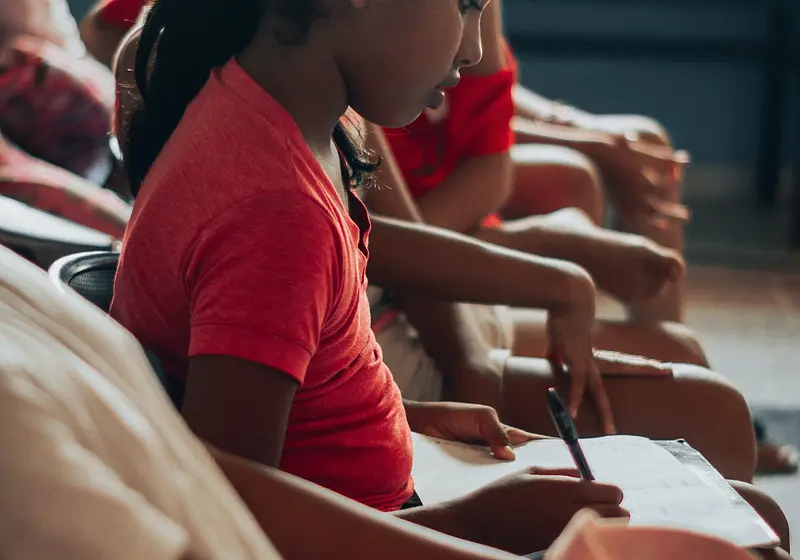Everyone knows the American school system has been crumbling for years, and it's time to address the many problems students face every day in public schools. As someone who has gone to public school for 11 years, it's become evident to me and my classmates that our schools are slowly falling apart. Some major issues facing students and teachers in schools today are underfunding, school safety concerns, decreased teacher salaries, Common Core, and mental health issues such as higher rates of depression and anxiety.
Let us slide into your dms 🥰
Get notified of top trending articles like this one every week! (we won't spam you)Decreased government funds
Almost all public school money comes from government funding. Public schools get two types of funds from the government: capital and revenue. Revenue funds are the larger pool, paying for teacher and admin salaries.
Capital funds are for building new buildings and upholding old buildings on campus. The National Funding Formula decides which schools get what sum of overall money depending how many students are falling behind and how many are low income, called per-pupil spending.
However, public schools are still drastically underfunded, especially following the recession of 2010. The inadequate funds lead to overworked teachers and fewer opportunities for students. After-school programs such as sports and clubs are shut down more often, and those that remain open can rarely afford proper uniforms, supplies, and gear. Teachers are often not paid for work done outside of school, such as chaperoning or after-school sports, which becomes volunteer work.
Take the Quiz: Which Indian city is the perfect holiday spot for you!?
Let's match you with an Indian city that you would love!
School Safety concerns
American schools are well known for their school shootings. Since 2018, 102 school shootings have occurred across the US according to EdWeek.org. It's completely normal for an American student to learn active shooter drills several times a year in case an armed person comes on campus. Although most shootings end without deaths and few injuries, they leave a lasting impact on the students and their families.
Students often develop traumatic stress symptoms and fear of going back to school, which affects both academic success and social life. Parents are horrified that their children's lives were endangered; teachers feared for their own safety as well as that of their students. There have been many attempts to improve school security against shooters, few of which have been successful. Fences around schools can be easily breached and cameras don't pick things up until it's too late.
Decreased teacher Salaries
Due to the underfunding mentioned earlier, teachers are often the ones getting screwed over. Because school budgets don't allow for staff members to be paid a fair wage, teachers end up either overworked, underpaid, or both. Teachers do their jobs because they love it, and they love the students, not because of a hefty paycheck.
Sometimes, teacher salaries are so low they can't afford to live in the area of their school if they do not also have a working spouse making more money. Most teachers get paid to work from 7 am to 3 pm, Monday through Friday. But the reality is, to grade papers, speak with parents, and prepare for lessons, teachers spend hours of unpaid overtime before and after school. Teachers spend so much time outside of school working, unpaid, because they care for their student's education, and yet they get little recognition for it.
Common Core
Common Core was implemented into classrooms first in 2009. The idea behind Common Core is that it standardizes the content for all students, and has specific benchmarks everyone needs to meet through a national curriculum that everyone follows. What actually ended up happening was a kind of "One size fits all" mindset becoming fostered, and teaching becoming fragmented and rigid.
Students learn in many ways, and part of being a teacher is being able to help each unique student in the way they need. Through standardized curriculums, teachers are given less leeway to teach in more individualistic ways, which creates problems for students that learn differently than others. Disabled children, sometimes undiagnosed, face many struggles because of this, because they require more specialized education.
Common Core focuses on the end goal, the test, the graduation. But in doing this, it takes the fun out of learning, pushing teachers to make more tests and especially pushing for standardized testing, taken twice a year. It also fragments teaching into chunks that are illogical and out of order.
I personally struggle with concepts that I don't think will benefit me. It's the "why do I need to learn this" idea that comes into many students' minds when they learn trigonometry for what seems to be no purpose. What makes learning enticing to young minds, is being able to apply what they're learning outside of school, and understand how this will help in the "real world".
Because of the end goal-based approach of Common Core, you don't see things come together until the last years of high school, and even in college, when you finally apply your knowledge. This makes it hard to want to do school work and be able to continue to push through because there's no love for learning involved.
Mental Health
Especially in middle and high schools, mental illness struggles with self-image, depression, and anxiety run rampant. Public schools are an easy place for these emotions to fester, with bullying, overwork, comparisons between students, and hurtful teachers. According to the National Alliance on Mental Illness (NAMI), 50% of all mental health conditions begin by age 14.
Without adequate support from staff and peers, students can feel alone and desperate. Overloads of homework often lead them to develop anxiety-related issues because they have no time to relax, spend time with friends and unwind. I know many people my age who are up all night because they get assigned so much homework that they need to finish before the next class.
This can lead to lack of sleep and burnout, which can lead to depression. Self-image issues, especially among young girls, start for many in 5th or 6th grade. Before they've even hit puberty, they're worried about not being skinny enough, not having the perfect figure, or having acne and skin abnormalities.
As literal children, we worry we don't look perfect enough. Schools can help by stepping in and giving lessons about mental health and having professionals available to talk to without parent involvement.
When all is said and done, there have been improvements in all of these areas at some point in time. The American school system has endless flaws, and in reality, we can't expect them all to be fixed overnight. But with a lot of advocacy and fundamental changes, it's possible to change the system to at least make school safer and more enjoyable for all students.
Parents and students can talk to their administration, or propose changes to the district. People of voting age can vote for politicians who intend to apply changes. One person can rarely make a big change, but if enough people complain loudly enough, change for the American school system can finally be on the horizon.










.jpg)



